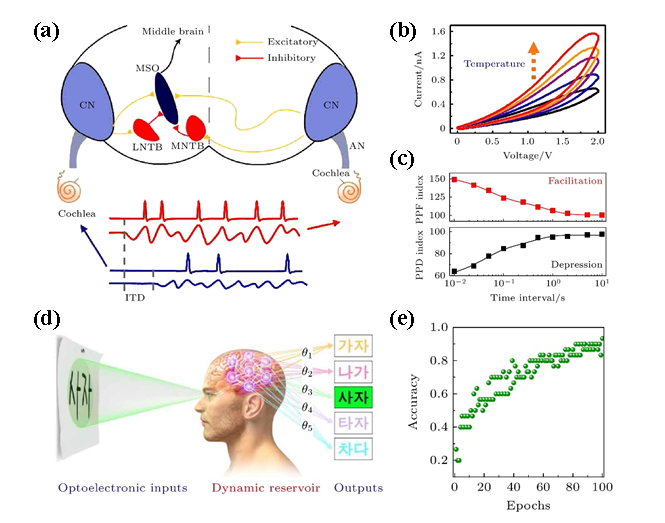Research progress of neuromorphic devices based on two-dimensional layered materials
来源: 作者: 发布时间:2023-04-03
Abstract
In recent years, the development of artificial intelligence has increased the demand for computing and storage. However, the slowing down of Moore’s law and the separation between computing and storage units in traditional von Neumann architectures result in the increase of power consumption and time delays in the transport of abundant data, raising more and more challenges for integrated circuit and chip design. It is urgent for us to develop new computing paradigms to meet this challenge. The neuromorphic devices based on the in-memory computing architecture can overcome the traditional von Neumann architecture by Ohm’s law and Kirchhoff’s current law. By adjusting the resistance value of the memristor, the artificial neural network which can mimic the biological brain will be realized, and complex signal processing such as image recognition, pattern classification and decision determining can be carried out. In order to further reduce the size of device and realize the integration of sensing, memory and computing, two-dimensional materials can provide a potential solution due to their ultrathin thickness and rich physical effects. In this paper, we review the physical effects and memristive properties of neuromorphic devices based on two-dimensional materials, and describe the synaptic plasticity of neuromorphic devices based on leaky integrate and fire model and Hodgkin-Huxley model in detail, including long-term synaptic plasticity, short-term synaptic plasticity, spiking-time-dependent plasticity and spiking-rate-dependent plasticity. Moreover, the potential applications of two-dimensional materials based neuromorphic devices in the fields of vision, audition and tactile are introduced. Finally, we summarize the current issues on two-dimensional materials based neuromorphic computing and give the prospects for their future applications.
- Paper's Website Adress:
- https://wulixb.iphy.ac.cn/cn/article/doi/10.7498/aps.71.20221424




